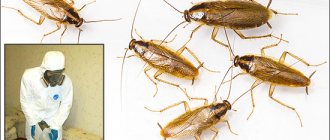Gardeners growing vegetables in greenhouses very often have to deal with various insects. The insect kingdom has about one and a half million species, a considerable part of which are pests. One of them is the common spider mite (Tetranychus urticae). Fighting ticks is not an easy task. This microscopic arthropod (0.2-1mm) survives under various conditions. One can only envy his vitality. It lives on all continents, without exception, even in Antarctica.
Gardeners go to great lengths to combat ticks. It is doused, sprinkled, and sprinkled with various insecticides. For the most part, spider mites choose greenhouses where cucumbers are grown as their habitat. In this article we will talk about how to get rid of spider mites and what measures to use most effectively.
Types of spider mites
It is a mistake to believe that the pest is one of a kind. There are many varieties of it according to food and climate preferences. There are spider mites that parasitize only indoor plants, and there are those that attack berry bushes, fruit trees, and roses. They are all different in size and appearance, so the gardener needs to know their specific differences.
Types of ticks:
- Red . Mainly an inhabitant of Europe, it damages indoor plants, but does not disdain greenhouse crops. In warm regions it feeds on open ground plants, preferring fam. Nightshades (tomatoes, eggplants, potatoes). The optimal temperature for comfortable reproduction is + 30 ° C; in northern latitudes it is practically not found outdoors, but in greenhouses and at home it produces up to 20 generations per year.
- Common spider mite. It is most common in the Central Federal District, the Volga-Vyatka region and the central zone of the Russian Federation. It is a scourge for garden plants in open and closed ground and house flowers. The pest is omnivorous and can take over an entire area in a season. It winters well at low temperatures; when greenhouses are populated, it begins active activity in February and during short sunny days.
It is almost impossible to examine spider mites on plants without a magnifying glass; their sizes range from 0.2 to 1 mm. The difference between larvae and adults is in the number of legs; imagoes have 8, while “babies” have 6.
The eggs are tiny, up to 0.12 mm, translucent. An adult specimen is up to 0.5 mm, greenish-yellow; due to the transparent shell, the internal organs are clearly visible in the form of dark spots. Females are closer to a reddish-orange color; their “legs” have claws with which they cling to shoots and leaves.
Both larvae and adults live in colonies, settling in a dense cocoon that wraps around the tops of plants with delicate leaves. The life cycle of one individual is up to 50 days.
- Turkestan. It has a wide habitat, found throughout the south of the Russian Federation and in the Far East, Siberia. This is an omnivorous parasite; it prefers stone fruit, pome-bearing plants, ornamental and legume plantings.
Ticks from wintering are red in color, after they start feeding they become greenish, size up to 0.6 mm, the larvae are pale greenish.
- Hawthorn. Inhabits warm regions of the Russian Federation and the CIS, feeds on fruit plants (pomaceous, stone fruit). More often found on cherries, pears, apples and peaches. The size of the pest is from 0.4 to 0.55 mm, the color is dark red (females) and green (males). Considered one of the most “creepy” types of spider mites, in extreme heat and drought they begin to multiply en masse and are capable of destroying the entire garden in a short time.
- Cyclamen. Theoretically, it is an inhabitant of the tropics, but it reproduces well in greenhouses and greenhouses, affecting cyclamens, chrysanthemums, geraniums, and gloxinia. Loves hot and humid climates, the pest is tiny, up to 0.2 mm, pale greenish in color. Large colonies of mites on flower leaves look like accumulations of dust.
Interesting to know! Spider mites are often confused with flat beetles or false spider mites. These are tiny insects that also live on domestic and cultivated plants. But unlike the true pest, false ones do not weave cocoons and love high humidity. You can detect it on indoor flowers and in the greenhouse if you run a white napkin along the inside of the leaf.
Symptoms of plant damage
The following signs of mite damage to plants are distinguished:
- Brown spots that look like holes made with a needle.
- Yellow or light green dots.
- Falling flowers and leaves.
- Slow plant growth.
- Silvery webs between the leaves.
- The presence of small insects on the underside of foliage that look like red or yellow moving dots.
- A large number of mites on the web is a sign of a large mite infestation.
- The presence of black grains that are easily separated from the plant - mite excrement.
Danger of ticks in the garden
The pest is very prolific; the female lays up to 7 pieces per day on the underside of the leaf. eggs The clutches are drought- and frost-resistant, they are able to survive a harsh winter under the snow, and in the spring larvae hatch from the eggs.
The period of active reproduction in the Central Federal District occurs in June, in the south of the Russian Federation - with the onset of hot weather (April-May). By the end of summer in cold regions, ticks hibernate, but if the hot season is long, they remain parasitic until September.
Arthropods overwinter in plant growth, in tree bark, soil, and plant debris; they often huddle in the cracks of garden buildings and safely wait out the cold period there.
It is important to know! Ticks are carriers of dangerous garden diseases - viruses, fungi, bacteria. They are not able to fly, but are carried on webs with the wind, on garden tools, clothes, and shoes.
Causes of the parasite
How and where does the parasite get to the plant? There may be the following reasons for this:
- With an infected plant brought from a nursery or store.
Important! When purchasing a new flower, you should immediately examine your pet thoroughly. If there are white or yellow spots on the leaves, you should refuse to purchase.
Advice! Immediately place the new plant for 2 weeks in a separate place, away from other plants. If problems suddenly arise with mites or other insects, other plantings will not be affected.
- With purchased or street soil substrate, humus. Under unfavorable conditions, an insect can hibernate and not reveal itself in any way. At high temperatures and low humidity, the tick wakes up and becomes more active.
Advice! Before using such soil, it must be disinfected using hot temperatures, for example, calcination.
- With the wind, which carries ticks through the air. On an open balcony, the likelihood of picking up a parasite increases.
- With gardeners' clothes. Clinging to a shirt or trousers, an uninvited guest ends up in a garden, greenhouse, or house.
- From plants adjacent to the dacha plot already infected with mites.
How to understand that a plant is infected
Signs of damage:
- Light, brown spots on the bottom of the leaf. Over time, it dries out and falls off.
- The leaf blades become bronze, burgundy or marbled in color.
- Dense web, mainly on the upper shoots. When the infection is severe, cobwebs cover the entire plant, and swarming clusters of mites are visible on young leaves.
- The leaf is deformed and twisted along with the petioles.
- The buds are withered, the growth of the plant is slow.
Why is it dangerous for plants?
Since this insect sucks the juice from the leaves, this leads to the gradual death of some tissue. Numerous “dead zones” form a drying area, resulting in leaves falling off. And without foliage, the plant cannot feed and develop, so it dies.
In addition to this main reason why ticks are dangerous, there are several more:
- it carries viral and fungal diseases;
- spreads gray mold spores;
- makes the plant vulnerable to disease.
Features of pest control in greenhouses and greenhouses
If a spider mite appears on seedlings that have already been planted (exposed for acclimatization) in a greenhouse, then it will not be easy to destroy it. Treatments once every 2 weeks will not give the desired effect, because... the number of individuals is updated much faster. Acaricides do not always act on eggs, and the new generation becomes resistant to poisons. Therefore, treatment is carried out every 7 days and the drugs are constantly changed.
It is important to know! Spider mites multiply very quickly in a greenhouse at a humidity of 30-50%, this level occurs in frequently opened, ventilated rooms. The rate of spread of the pest is slightly reduced at a humidity of 90%, but not all crops are suitable for such growing conditions.
Entomophages: natural enemies of ticks
If spider mites are found on cucumbers, tomatoes or other greenhouse crops, and the use of acaricides is unacceptable for the gardener, you can try to populate the greenhouse with natural enemies of the mite. This:
- Gall midge Afidimiza (entomophagous, mosquito predator).
- Amblyseius Swirsky.
- Phytoseiulus.
You can order containers with insects from a specialized store and simply place them in the greenhouse. Moreover, Amblyseius Svirski (lives only 30 days, but produces offspring), a predatory acarifage, has perfectly adapted to the climate of the Russian Federation and protects greenhouses all year round, unlike gall midges and phytoseiulus, they are active only in spring and summer.
It is important to know! The population rate of entomophages is 4-5 pupae per 1 m2 of greenhouse. They are “planted” every week until the ratio of pests and entomophages reaches 1:5.
Agrotechnical methods
The following are used as verified ones:
- Alternation of crops. The crops that ticks love, eggplants and cucumbers, can be alternated with inedible tomatoes, cabbage, or cereals can be planted between the rows, which interfere with the movement of the pest.
- Constant weeding and loosening.
- Destroying affected leaves or burning the whole plant.
- Artificial increase in humidity from 85%. All plantings are sprayed with warm water for 3-4 days.
- Thinning of plantings, destruction of stepchildren and extra shoots.
- Periodically open the greenhouse during cool hours. Ticks do not reproduce in the cold.
Be sure to dig up the soil in the greenhouses after the end of the season and remove all plant debris. You can replace the top layer of soil with a new one. A good help would be to use a sulfur smoke bomb in the fall and spring.
Chemicals
How to treat spider mites? Insecticides are ineffective to control the pest; only acaricides (anti-mite agents) are used. For processing, you need a container with a solution, a sprayer, manual or “Bug” type, gloves and a protective mask.
Preparations:
- "Aktara" (thiamethoxam). It is not considered an acaricidal agent, but in practice it destroys spider mites. In this case, not only pests die, but also phytophagous mites.
- "Fitoverm" (aversectin). Insectoacaricide of intestinal contact action, broad-spectrum biological agent. Paralyzes and destroys the pest within 3-5 days, the effect of treatment lasts up to 20 days.
- "Fufanon" , "Anticlesh" . Contains malathion and lasts up to 7 days. It is recommended to carry out the treatment in cloudy and humid weather; 10 ml of the product is diluted in 10 liters of water and sprayed on up to 10 m2 of plantings.
- Actellik (pirimiphos-methyl). The protective effect lasts up to 2 weeks, can be combined with any chemical. means like Bordeaux mixture. Solution – 2 ml per 2 liters of water, enough for up to 10 m2 of planting area.
- "Apollo" (clofentesine), a powerful drug, destroys and sterilizes not only the sexually mature individual, but also the eggs. The effect of treatment lasts up to 30 days. Dilute 2 ml of the product per 5 liters of water (per 10 m2 of planting).
For those gardeners who do not want to spray, they produce Plant-Pin , a product in the form of sticks that are stuck into the ground next to the plant. The drug gradually dissolves under the influence of moisture and begins to protect plantings for 2-3 days. up to 1.5 months
Preventive actions
It is always easier to prevent spider mites from appearing on indoor flowers and other plants than to fight them later.
Therefore, the following preventive measures should be taken to protect flowers from ticks:
- spider mites usually actively reproduce in low humidity conditions, so you should regularly ventilate the room and spray the flowers with moisture;
- any nutrient substrate - purchased or prepared at home - should be disinfected by placing it in an oven heated to 180 degrees for half an hour, sphagnum moss should be poured with boiling water;
- while processing flowers, you also need to wipe the window sills and other places where the plants are located, as pest larvae may fall on them;
- purchased bouquets are never placed next to indoor plants;
- Plants brought from the store must undergo a kind of quarantine - they are kept at home separately from others for at least 3 weeks.
When fighting spider mites, an integrated approach should be used, prevention should be carried out and the developmental features of this phytophage should be taken into account.
Sometimes it is necessary to carry out several treatments, since after the first spraying some pests may remain alive. Fighting spider mites is quite difficult, but if you carry out integrated pest control, they can be defeated fairly quickly.
Recently searched:
How to get rid of spider mites at home
If a mite (common, cyclamen, red) is found in a small area in a greenhouse or on 1-2 potted plants, then traditional methods can be used. Take a solution of tar and laundry soap and use a sponge to wipe the infected leaves and branches. Repeat every 3-7 days for 2-3 weeks.
For large areas of damage, garden acaricides are used in standard dilution: “Apollo”, “Fufanon”, “Antiklesch”.
"Exotic" option
Gardeners recommend a slightly exotic, but very effective method against spider mites if the pest has settled on potted flowers. How to fight at home? Flea and tick medications used on animals will help.
They are used as: “Bars” spray, “Dana” drops and shampoos, ampoules for obtaining solutions “Neostomazan”, “Decis”, “Frontline”.
In fact, these are the same acaricidal agents that kill arthropods, but only those parasitic on dogs and cats. Spray "Bars" can be used without preparation; it is already available in diluted form and with a special dispenser. Once every 7-10 days is enough. carry out processing of potted and greenhouse flowers.
Shampoos are diluted in a small amount of water to make it convenient to pass through a sprayer, or the affected plants are smeared with a sponge soaked in shampoo without dilution.
“Neostomazan”, “Frontline”, “Decis” are diluted at the rate of 1 ampoule per 1.5 liter bottle of warm (+30o C) water. Shake well and use a sprayer to treat the flowers.
How to deal with spider mites on various plants
Spider mites, despite their tiny size, cause great damage to vegetable and garden crops. It destroys the foliage of indoor plants and flowers, and parasitizes plants in both open and closed ground.
It is difficult to fight against spider mites, or any other mites, as they quickly adapt to insecticides and multiply at an alarming rate. But it is possible to cope with it if you take the right measures in a timely manner, depending on the type of plant, place of growth and prevalence of the population.











